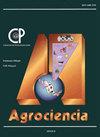EVALUATING TIME SERIES PREDICTION MODELS: EGG PRICES IN MEXICO
IF 0.5
4区 农林科学
Q4 AGRICULTURE, MULTIDISCIPLINARY
引用次数: 0
Abstract
Mexico is the world’s largest consumer of eggs, producing 3.05 million Mg in 2021. The high variation in wholesale prices is a feature of the egg production system, which is important to producers and government institutions that need to forecast future prices for activity planning. As a result, it is necessary to propose tools that can reliably predict egg prices. The goal of this paper was to compare the performance of various statistical models by analyzing the time series of egg prices using the Akaike index and forecast error to determine which model best predicts the wholesale price of white eggs. The models evaluated were the autoregressive integrated moving average model (ARIMA), ARIMA with interventions, ARIMA with transfers, and regression with ARIMA errors. Two time series were used: the wholesale price of white eggs, constructed with data from the National System of Information and Market Integration (SNIIM) and the Agrifood and Fisheries Information Service (SIAP), and egg imports, calculated with data from the Economic Information System. The latter was used as an exogenous variable to explain the price of eggs. Both cover the period from January 2006 to December 2021. According to the Akaike index, the model with the best adjustment was ARIMA (0,1,1)(1,0,1)[12] with interventions. In the evaluation of forecast error, the best models were the regression models with ARIMA (1,1,0)(1,0,1)[12] and ARIMA (1,1,0)(1,0,1)[12] errors with transfer.评估时间序列预测模型:墨西哥鸡蛋价格
墨西哥是世界上最大的鸡蛋消费国,2021 年鸡蛋产量为 305 万枚。批发价格变化大是鸡蛋生产系统的一个特点,这对于需要预测未来价格以制定活动计划的生产商和政府机构来说非常重要。因此,有必要提出能够可靠预测鸡蛋价格的工具。本文的目的是通过使用 Akaike 指数和预测误差分析鸡蛋价格的时间序列,比较各种统计模型的性能,以确定哪种模型能最好地预测白壳鸡蛋的批发价格。评估的模型包括自回归综合移动平均模型(ARIMA)、带干预的 ARIMA、带转移的 ARIMA 和带 ARIMA 误差的回归。使用了两个时间序列:利用国家信息和市场整合系统(SNIIM)和农业食品与渔业信息服务(SIAP)的数据构建的白壳鸡蛋批发价格,以及利用经济信息系统的数据计算的鸡蛋进口量。后者被用作解释鸡蛋价格的外生变量。两者的时间跨度均为 2006 年 1 月至 2021 年 12 月。根据 Akaike 指数,调整效果最好的模型是有干预的 ARIMA (0,1,1)(1,0,1)[12]。在预测误差评估方面,最佳模型是带有 ARIMA (1,1,0)(1,0,1)[12] 误差的回归模型和带有转移的 ARIMA (1,1,0)(1,0,1)[12] 误差的回归模型。
本文章由计算机程序翻译,如有差异,请以英文原文为准。
求助全文
约1分钟内获得全文
求助全文
来源期刊

Agrociencia
农林科学-农业综合
CiteScore
0.50
自引率
33.30%
发文量
51
审稿时长
18-36 weeks
期刊介绍:
AGROCIENCIA is a scientific journal created and sponsored by the Colegio de Postgraduados. Its main objective is the publication and diffusion of agricultural, animal and forestry sciences research results from mexican and foreign scientists. All contributions are peer reviewed. Starting in the year 2000, AGROCIENCIA became a bimonthly and fully bilingual journal (Spanish and English versions in the same issue). Since 2007 appears every month and a half (eight issues per year). In addition to the printed issues, the full content is available in electronic format.
 求助内容:
求助内容: 应助结果提醒方式:
应助结果提醒方式:


